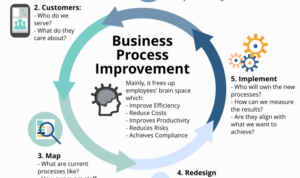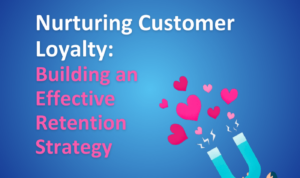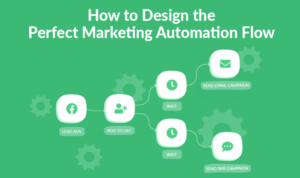Product development is the heartbeat of modern business, fueling growth and innovation. Dive into the dynamic world of creating new products with this guide that breaks down the stages and strategies of this essential process.
From market research to idea generation, testing to iterative design, discover how each step contributes to shaping successful products that captivate consumers and drive business success.
Overview of Product Development
Product development is the process of creating new products or improving existing ones to meet the needs and desires of consumers. It involves a series of steps to bring a product from concept to market.
Importance of Product Development
Product development is crucial for business growth as it allows companies to stay competitive in the market. By continuously innovating and introducing new products, businesses can attract new customers, retain existing ones, and increase revenue.
Stages of Product Development
- 1. Idea Generation: This stage involves brainstorming and researching potential product ideas based on market trends and consumer needs.
- 2. Concept Development and Testing: Once an idea is selected, a concept is developed and tested with target consumers to gather feedback.
- 3. Design and Engineering: The product is designed and engineered, considering factors like functionality, aesthetics, and manufacturing feasibility.
- 4. Prototype Development: A prototype is created to test the product’s performance and make necessary adjustments.
- 5. Testing and Validation: The product is tested rigorously to ensure it meets quality standards and fulfills consumer expectations.
- 6. Launch and Commercialization: The final product is launched into the market, accompanied by marketing strategies to attract customers and drive sales.
Market Research in Product Development
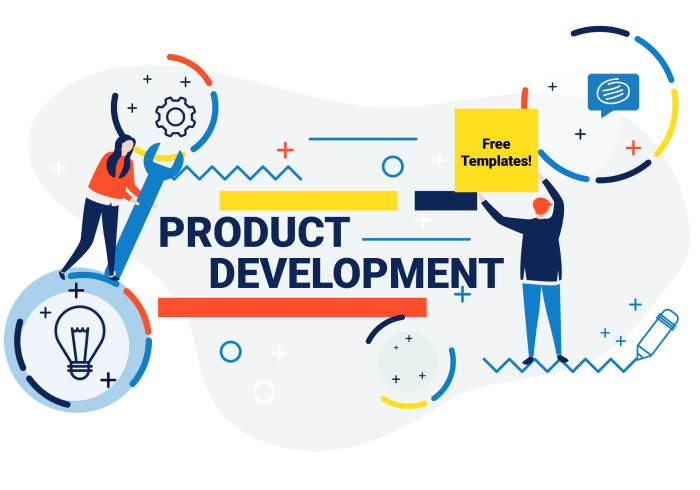
Market research plays a crucial role in product development by providing valuable insights into consumer needs, preferences, and market trends. By conducting thorough market research, companies can make informed decisions about product features, pricing strategies, and marketing campaigns.
Examples of Market Research Influence on Product Development
- Surveying potential customers to gather feedback on product prototypes and identify areas for improvement.
- Analyzing competitors’ products and pricing to differentiate the new product in the market.
- Conducting focus groups to understand consumer perceptions and preferences towards the product.
Methods for Conducting Market Research
- Online Surveys: Gathering data from a large sample size quickly and cost-effectively.
- Interviews: In-depth conversations with target consumers to gain qualitative insights.
- Observational Research: Studying consumer behavior in real-life settings to understand preferences.
Idea Generation and Concept Development
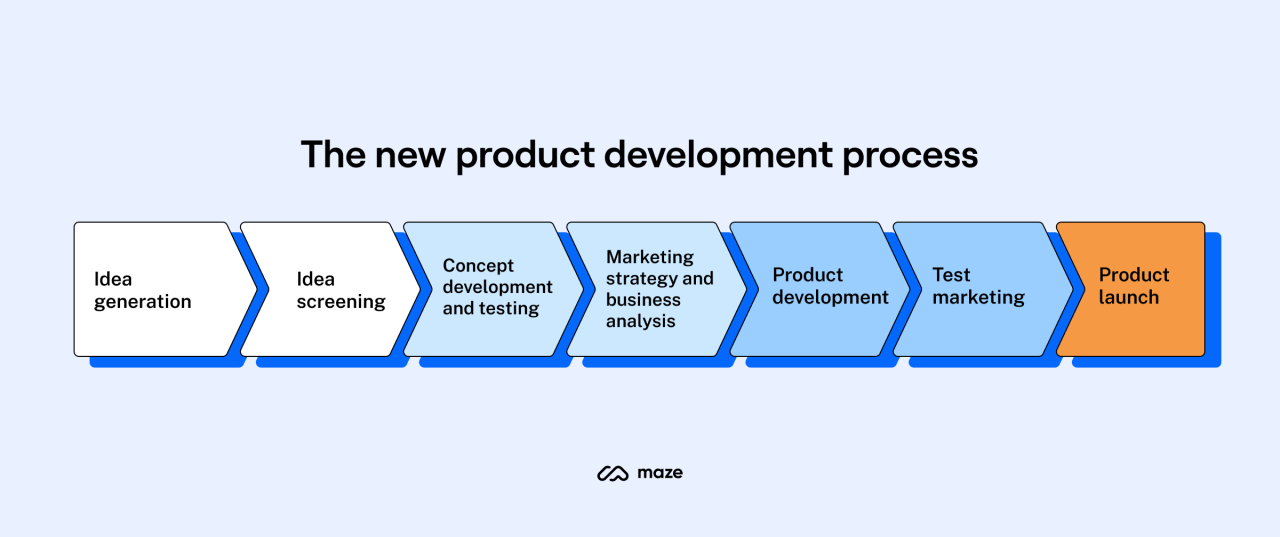
Coming up with new product ideas and developing them into successful concepts is a crucial part of the product development process. Let’s dive into the process of idea generation, techniques for concept development, and the importance of prototyping in refining product concepts.
Idea Generation, Product development
Idea generation involves brainstorming and exploring various sources to come up with innovative concepts for new products. Some techniques for idea generation include:
- Brainstorming sessions with cross-functional teams to gather diverse perspectives and ideas.
- Market research to identify gaps and opportunities in the market that can be addressed through new products.
- Crowdsourcing ideas from customers, employees, and other stakeholders to tap into collective creativity.
- Trend analysis to anticipate future needs and preferences of consumers.
Concept Development
Concept development is the process of refining and elaborating on initial ideas to create detailed concepts for new products. Some techniques for concept development in product design include:
- Creating sketches, renderings, and mockups to visualize the product concept.
- Conducting focus groups and user testing to gather feedback and insights for iterative refinement.
- Developing detailed product specifications and feature lists to guide the design process.
- Using 3D modeling and CAD software to create virtual prototypes for further evaluation.
Importance of Prototyping
Prototyping plays a crucial role in refining product concepts by providing a tangible representation of the idea for testing and validation. Some key reasons why prototyping is important include:
- Identifying design flaws and usability issues early in the development process.
- Testing functionality and performance to ensure the product meets user requirements.
- Obtaining feedback from stakeholders to make necessary improvements before full-scale production.
- Reducing time and costs by addressing potential issues early on and avoiding costly changes later in the process.
Testing and Validation: Product Development
Product testing plays a crucial role in the development phase as it helps ensure that the product meets the desired standards of quality, functionality, and reliability. By conducting various tests, developers can identify and address any issues or defects before the product reaches the market, ultimately saving time and resources.
Types of Testing Conducted
- 1. Usability Testing: This type of testing focuses on how easy and intuitive the product is for users to interact with. It helps identify any user experience issues and ensures that the product is user-friendly.
- 2. Performance Testing: Performance testing evaluates the speed, responsiveness, and stability of the product under different conditions. It helps ensure that the product can handle the expected workload without crashing or slowing down.
- 3. Compatibility Testing: Compatibility testing ensures that the product functions correctly across different devices, operating systems, and browsers. It helps guarantee a seamless user experience regardless of the platform used.
- 4. Security Testing: Security testing examines the product’s vulnerability to potential threats and ensures that sensitive data is protected. It helps prevent security breaches and safeguards user information.
Validation Processes
- 1. User Testing: User testing involves gathering feedback from real users to evaluate the product’s usability, functionality, and overall satisfaction. It helps validate whether the product meets user needs and expectations.
- 2. Market Testing: Market testing involves releasing a limited version of the product to a target audience to gauge interest and gather feedback. It helps validate the product’s market fit and potential for success.
- 3. Regulatory Compliance Testing: Regulatory compliance testing ensures that the product meets all relevant industry standards and regulations. It helps validate the product’s legality and adherence to guidelines.
Iterative Design and Improvements
Iterative design in product development refers to the process of continuously making improvements and refinements to a product based on feedback and testing. This approach allows for the product to evolve over time, ensuring that it meets the needs and preferences of the target market.
Feedback Loops Driving Product Improvements
Feedback loops play a crucial role in driving product improvements. By collecting feedback from customers, stakeholders, and testing processes, companies can identify areas for enhancement and make necessary adjustments to the product. For example, after launching a new software application, the development team may receive feedback from users about bugs or features that are not working as expected. This feedback loop enables the team to make improvements, release updates, and enhance the overall user experience.
- Regular surveys and questionnaires to gather customer feedback
- Monitoring online reviews and social media comments for insights
- Analyzing sales data and user behavior to identify patterns and trends
Continuous feedback loops are essential for staying competitive in the market and ensuring that the product remains relevant to the evolving needs of consumers.
Role of Customer Feedback in Shaping Product Iterations
Customer feedback plays a critical role in shaping product iterations. By listening to the voice of the customer, companies can understand what features are most valued, what aspects need improvement, and what new functionalities should be added. This direct input from users helps in prioritizing product changes and making informed decisions during the development process.
- Implementing requested features based on customer feedback
- Addressing pain points and usability issues highlighted by users
- Testing new iterations with a sample group of customers for validation

